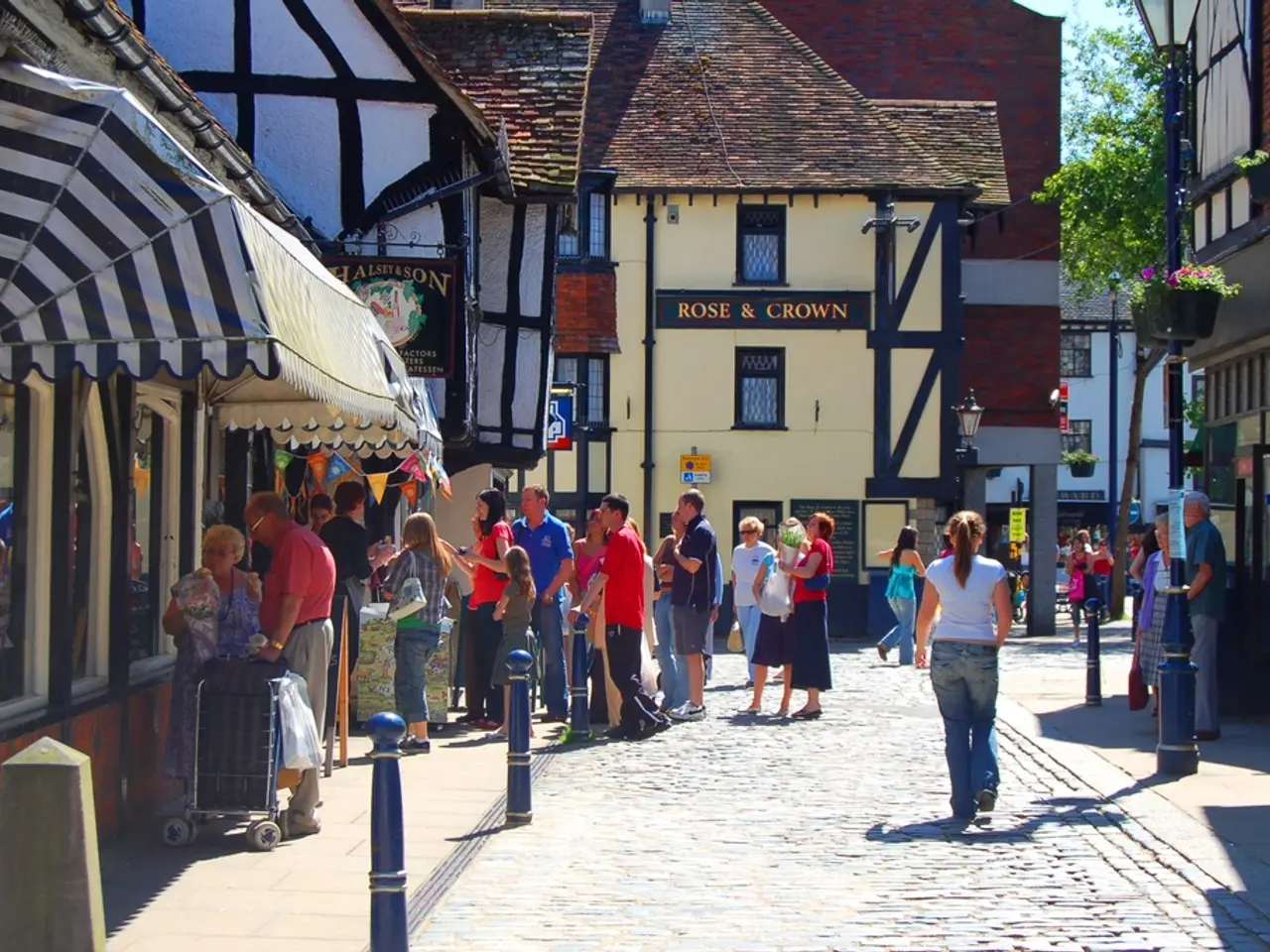Growth Rate of Synthetic Rope Market Forecasted to Reach 7.0% by 2034
==================================================================================
The global synthetic ropes market is on an upward trajectory, with projections indicating that it will reach approximately USD 3.19 billion by 2032. This growth is expected to continue, with a compound annual growth rate (CAGR) of around 6.0% from 2025 to 2032 [1].
The market's expansion is driven by various factors, including the rising demand across industries such as marine, construction, oil and gas, and transportation. Technological advancements are also playing a significant role, improving rope strength, durability, and multifunctionality. Consumer preferences are shifting towards synthetic ropes due to their superior performance and longevity compared to traditional natural fiber ropes [1].
In 2024, the Asia-Pacific (APAC) region led the global market with a 52.7% share and amounted to approximately USD 0.7 billion in market value for synthetic ropes. The region is expected to maintain its dominance due to increasing applications in industries requiring high tensile strength and resistance to environmental factors [1].
The marine and fishing sector is a significant consumer of synthetic ropes, representing more than 38.1% of the global market demand. Companies like Cortland, Atlantic Braids, and Bridon-Bekaert are innovating in this space, introducing high-performance synthetic ropes for deep-sea exploration and sustainable production methods [2].
Synthetic ropes are also essential in offshore oil and gas operations, used in mooring systems, lifting, and towing due to their high strength-to-weight ratios and resistance to harsh conditions. In India, inland waterway and smart port projects have driven an 18% year-over-year increase in synthetic rope demand [3].
India's synthetic rope industry is receiving government support through initiatives like the PM MITRA scheme, which aims to establish seven integrated textile parks with a total investment of ₹4,445 crore [4]. Companies like Axiom Cordages are expanding their product offerings, launching new ranges of high-modulus synthetic ropes for heavy lifting and mooring, and venturing into renewable energy [5].
Synthetic ropes are also popular in sports like climbing, sailing, and camping due to their lightweight and durable properties that resist abrasion and UV damage. In aquaculture, synthetic ropes, particularly polypropylene, are vital for securing nets and cages due to their water resistance and buoyancy [6].
In the construction industry, synthetic ropes are used for rigging, lifting, and scaffolding due to their lightweight design and high tensile strength. They are also increasingly used in cranes and industrial lifting for their strength and flexibility, made from high-performance fibers like UHMWPE [7].
The Compound Annual Growth Rate (CAGR) of the Synthetic Ropes Market is 7.0% during the forecast period (2025-2034) [1]. Polypropylene has emerged as the leading material type, accounting for over 34.7% of the total synthetic ropes market share globally [8].
References:
[1] Grand View Research. (2022). Global Synthetic Ropes Market Size, Share & Trends Analysis Report by Material Type (Polypropylene, Polyester, Aramid, Others), By Application (Marine & Fishing, Construction, Oil & Gas, Transportation, Others), By Region, and Segment Forecasts, 2022 - 2032.
[2] Cortland. (n.d.). Cortland Plasma. Retrieved from https://www.cortlandlineman.com/products/cortland-plasma
[3] India Brand Equity Foundation. (2021). India's Synthetic Rope Industry: A Growing Sector. Retrieved from https://www.ibef.org/industry/synthetic-rope-industry-india.aspx
[4] Press Information Bureau, Government of India. (2020). PM MITRA Scheme: Establishment of 7 Integrated Textile Parks. Retrieved from https://pib.gov.in/PressReleasePage.aspx?PRID=1687157
[5] Axiom Cordages. (n.d.). Axiom Ultra. Retrieved from https://www.axiomcordages.com/axiom-ultra
[6] The Fishing Daily. (2020). Synthetic Ropes in Aquaculture: Benefits and Applications. Retrieved from https://www.thefishingdaily.com/synthetic-ropes-in-aquaculture-benefits-and-applications/
[7] Construction Equipment Guide. (n.d.). Synthetic Ropes in Construction: Advantages and Applications. Retrieved from https://www.constructionequipmentguide.com/synthetic-ropes-in-construction-advantages-and-applications/
[8] Grand View Research. (2022). Global Synthetic Ropes Market Size, Share & Trends Analysis Report by Material Type (Polypropylene, Polyester, Aramid, Others), By Application (Marine & Fishing, Construction, Oil & Gas, Transportation, Others), By Region, and Segment Forecasts, 2022 - 2032.
The manufacturing sector, particularly the synthetic rope industry, experiences significant growth and investments due to increased demand from various industries like marine, construction, oil and gas, and transportation. Financing plays a crucial role in supporting the expansion of this industry, as seen through government initiatives and private companies' investment in research and development.




